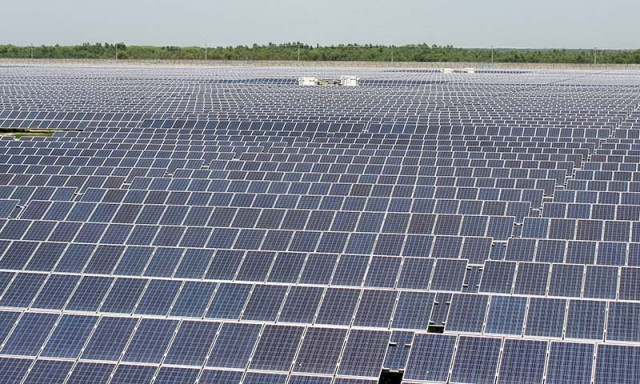Alternative energy: Solar Park generates power worth Rs4b in 17 months
The project will produce enough electricity to power 320,000 houses

About 400,000 panels have been set up at Quaid-e-Azam Solar Park. PHOTO: FILE
This was said by Sajjad Ahmad Sajid, the project’s chief technical officer, on Thursday.
The provincial government, he said, has been promoting the use of alternative energy sources which has produced positive outcomes, including controlling carbon dioxide emissions.
He added this would serve as a positive catalyst to ensure healthy and carbon-free environment.
The backdrop
At least 400,000 solar panels have been set up in an area of 200 hectares in Cholistan Desert as part of the megaproject. The 100MW solar farm was built by a Chinese company Xinjiang SunOasis in just three months and started selling electricity to the national grid in August 2015.
This is said to be the first energy project under the $46-billion China-Pakistan Economic Corridor. The solar plant will be expanded further in order to generate more electricity to meet the surging demand in Pakistan.

The project is scheduled to be completed in 2017 and will produce 1,000MW of electricity enough to power about 320,000 households. The construction of the next phase is underway.
Pakistan has a potential to generate over 2.324 million megawatts electricity per annum through solar thermal and photovoltaic systems, according to officials.
Though per-megawatt cost of solar power is higher at the beginning of a project, a subsequent decline in costs makes it financially viable in the medium term. Its installation is easy and quick and it could play an important role in addressing the energy crisis.
Many countries such as the US, Germany, Australia, Brazil, the UK, Japan, India, China and Thailand are now generating electricity in bulk through the solar system.
Published in The Express Tribune, September 30th, 2016.



















COMMENTS
Comments are moderated and generally will be posted if they are on-topic and not abusive.
For more information, please see our Comments FAQ